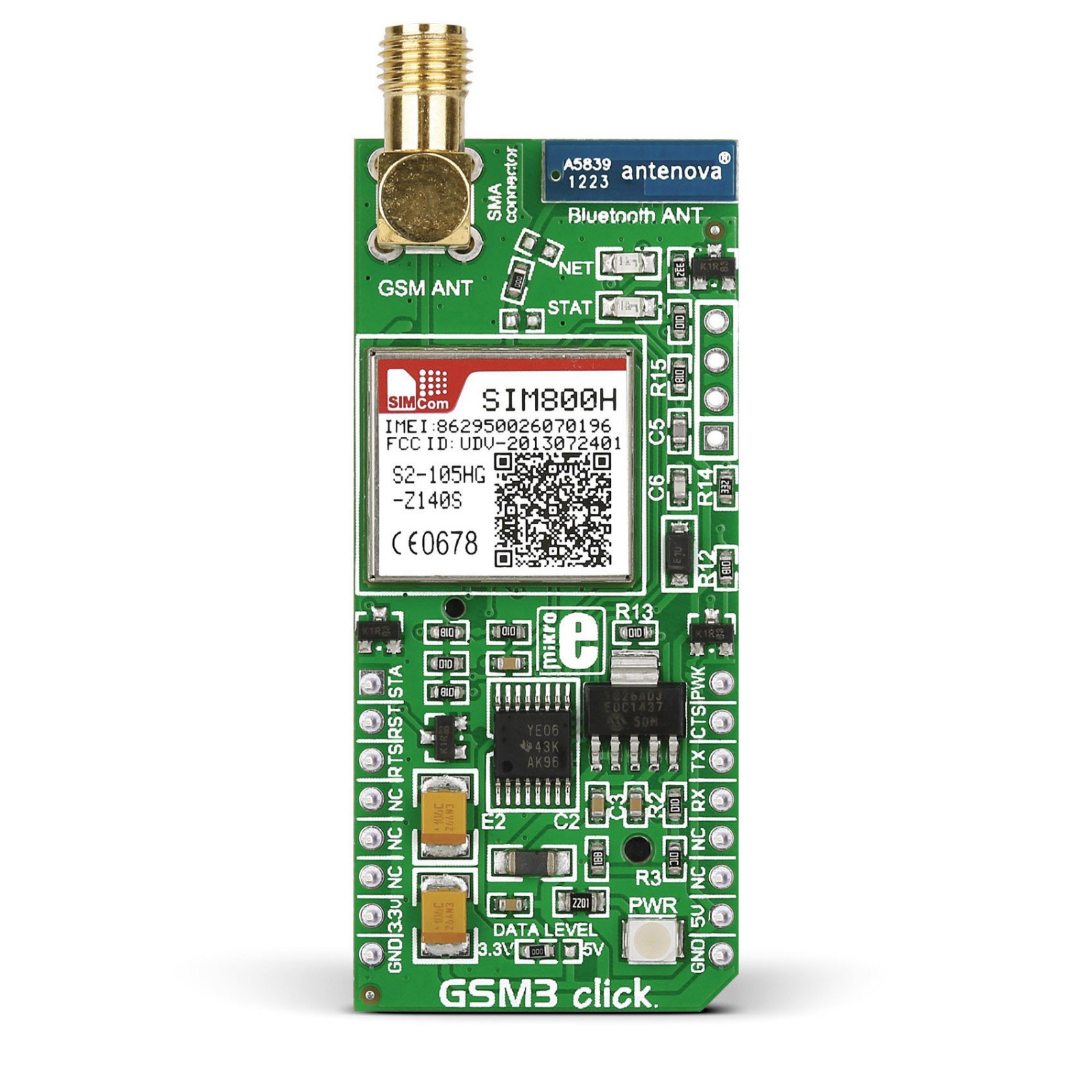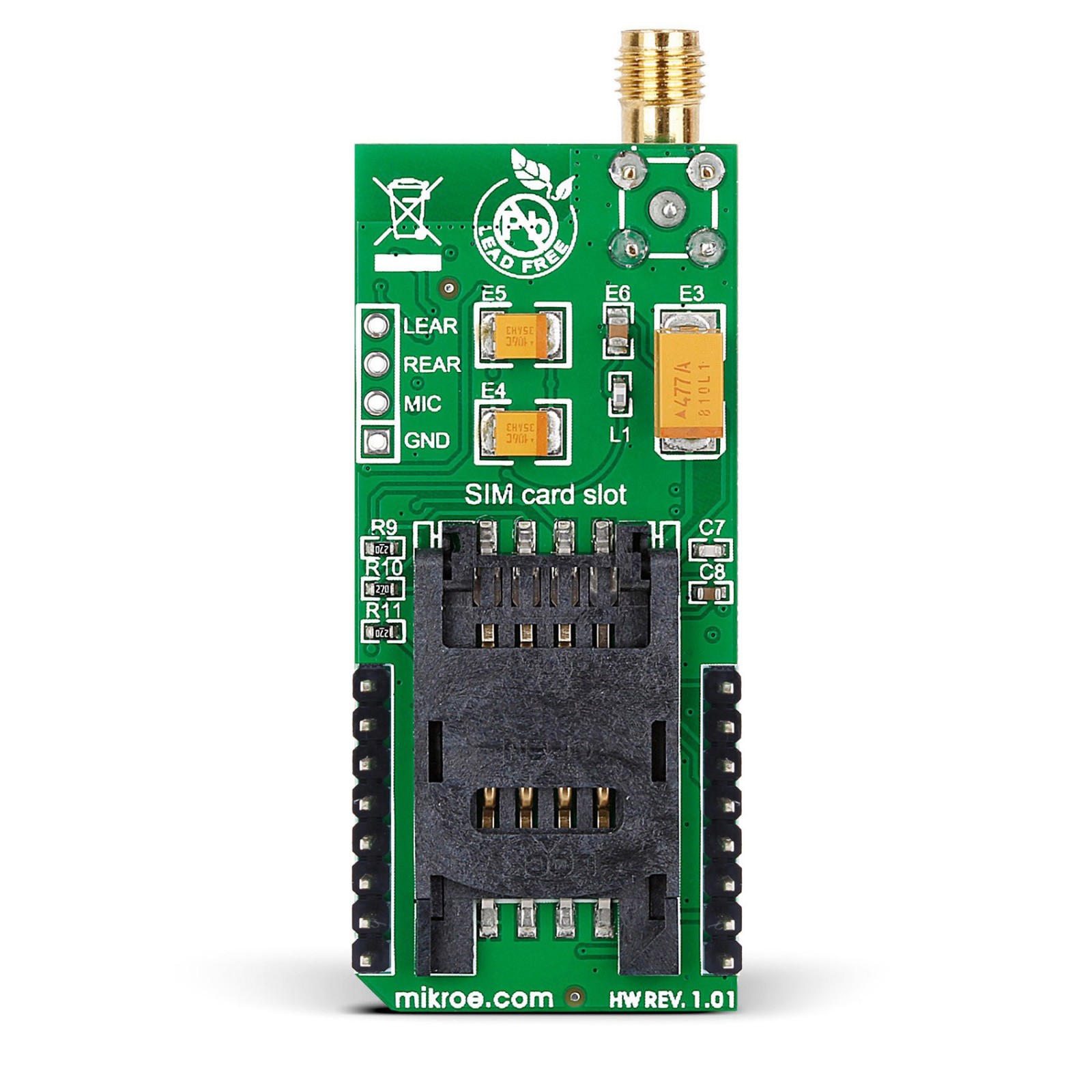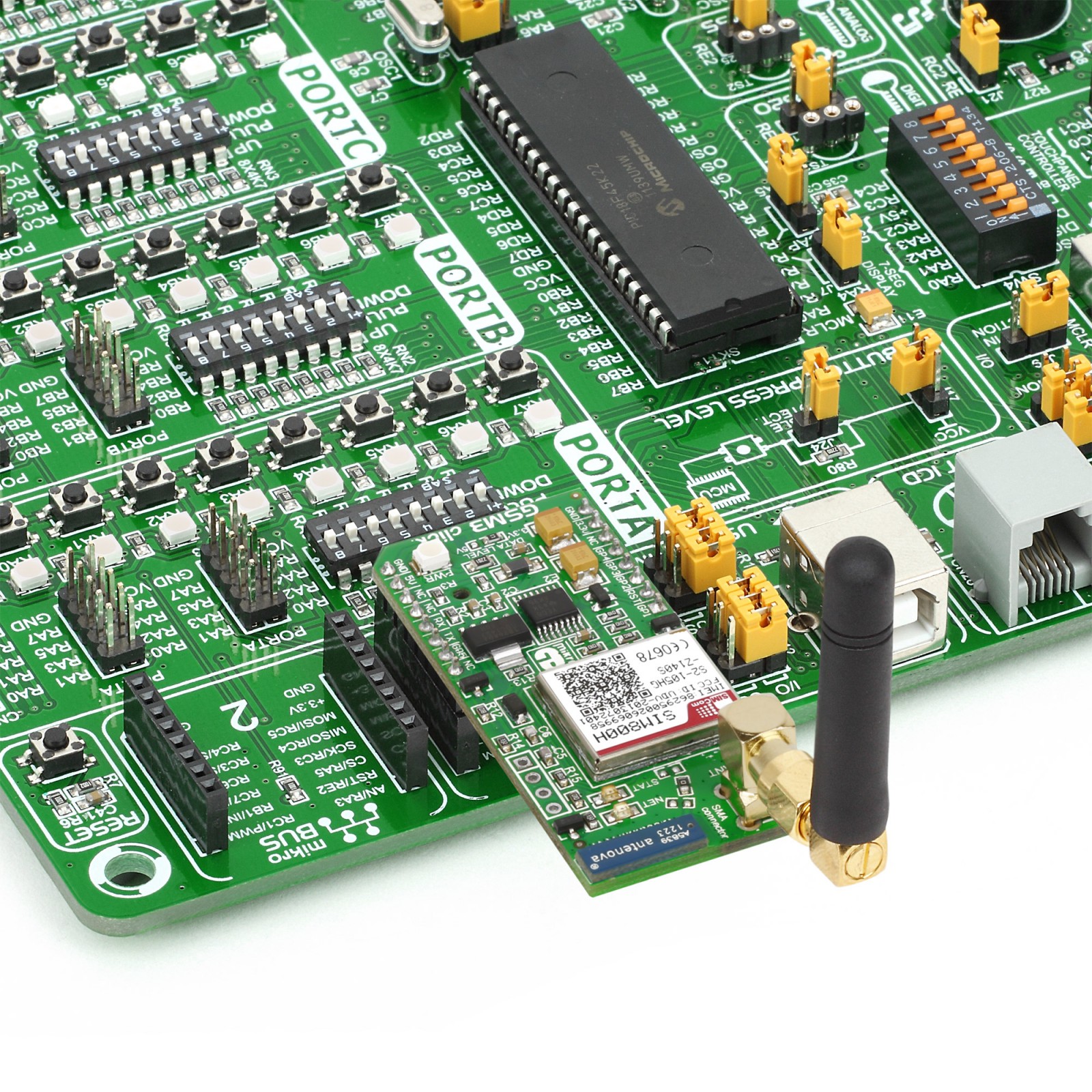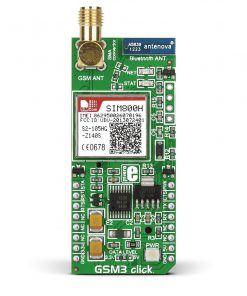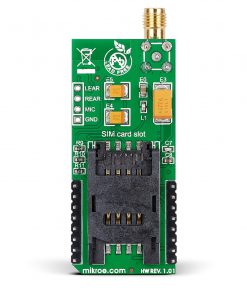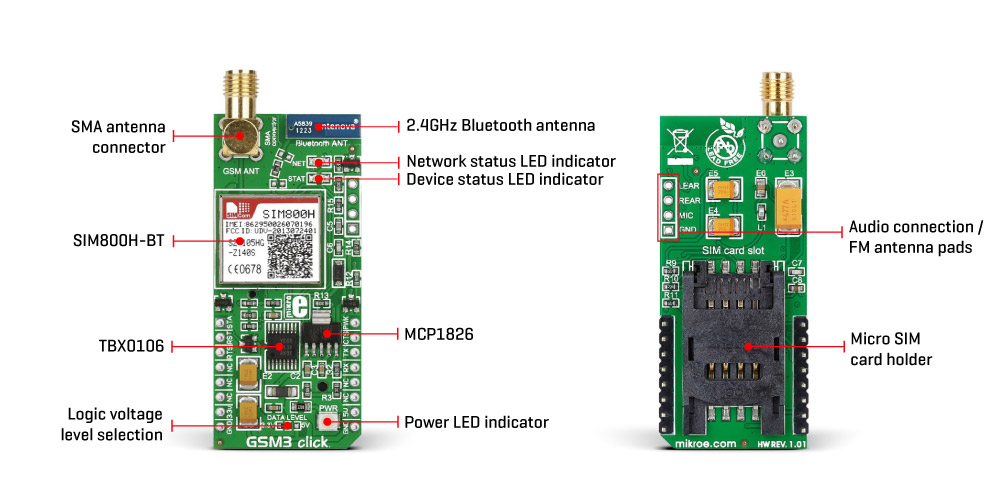GSM3 Click is a compact add-on board that contains a complete quad-band 2G GSM/GPRS cellular network communication solution. This board features the SIM800H, a GSM/GPRS module from SIMCom. In terms of cellular communication, it can transmit voice, SMS, and data information with a low power consumption. Besides the GSM/GPRS, the SIM800H module features Bluetooth and FM, and has an embedded AT set of commands. This Click board™ makes the perfect solution for the development of applications for communication with your devices, turning appliances on/off, exchanging SMS messages for status updates, and a wide range of M2M applications, including mobile Internet terminals, automatic meter reading (AMR), remote monitoring automation and control (RMAC), surveillance and security, road pricing, asset tracking, wireless points of service (POS) and similar applications, which rely on a cellular network connection.
GSM3 Click is supported by a mikroSDK compliant library, which includes functions that simplify software development. This Click board™ comes as a fully tested product, ready to be used on a system equipped with the mikroBUS™ socket.
 GSM-GPS Click
1 × R1,300.00
GSM-GPS Click
1 × R1,300.00  GPS Click
1 × R1,050.00
GPS Click
1 × R1,050.00  EXPAND Click
1 × R260.00
EXPAND Click
1 × R260.00  DIGI POT Click
1 × R370.00
DIGI POT Click
1 × R370.00  tRF Click
1 × R1,050.00
tRF Click
1 × R1,050.00 
